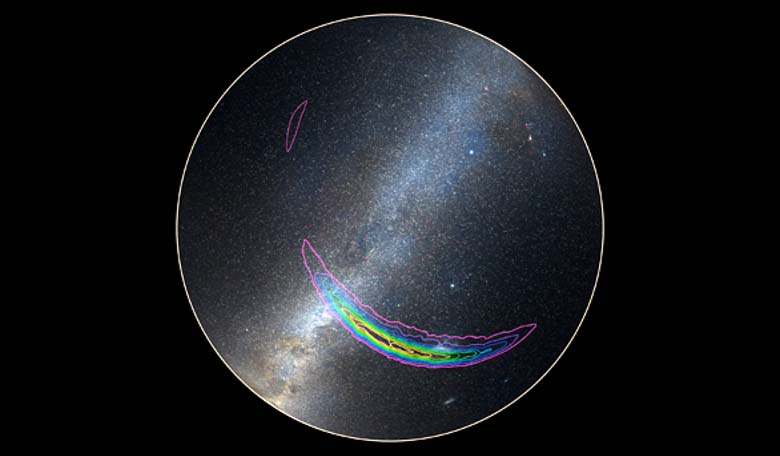When the news that gravitational waves had been detected for the first time was released earlier this year in February, the discovery rocked the science community and a new window on the cosmos was opened. The event, termed GW150914, was resolved to an area of approximately 600 square degrees in the southern hemisphere. This is comparable to the angular area on Earth occupied by the United States – a sizeable area that scientists would like to narrow down for greater precision. Finding a way to do this has perhaps now been made easier, as less than half a second later, the Gamma-ray Burst Monitor (GBM) on NASA's Fermi Gamma-ray Space Telescope identified a brief, weak burst of high-energy light originating from the same part of the sky.
Black holes are expected to merge without significant X-ray or gamma-ray emission because gas orbiting the system is needed to generate the light and it is thought that any available gas around the binary black holes would have been swept up long before the gravitational waves were emitted. For this reason, some astronomers are doubtful of the true nature of these apparently associated gamma ray bursts (GRBs) and suggest that they are therefore unrelated to GW150914.
Nonetheless, so far, the initial prognosis is favouring a joint source for the two events. Analysis of the gamma rays suggest just a 0.2 percent chance that these beams of intense radiation are a simple random coincidence with the GW150914 event. If it is established that the bursts originated from the same source as the gravitational waves, it would be a landmark finding and would provide scientists with a much deeper understanding of merging black holes.
"This is a tantalizing discovery with a low chance of being a false alarm, but before we can start rewriting the textbooks we'll need to see more bursts associated with gravitational waves from black hole mergers," said Valerie Connaughton, a GBM team member at the National Space, Science and Technology Center in Huntsville, Alabama, and lead author of a paper on the burst now under review by The Astrophysical Journal.
Fermi’s Gamma-ray Burst Monitor can detect radiation through a wide energy range from X-rays to gamma rays with energies between 8,000 and 40 million electron volts (eV) over a large field of view. As its view of the sky is unhindered by Earth’s atmosphere, it is the ideal instrument for detecting light from short gamma-ray bursts (GRBs), which last less than two seconds.
Gamma Rays are caused by some of the most energetic events in the Universe from the collapse of stars, to the collisions of compact objects such as neutron stars and black holes and it is these latter systems that are also theorised to be prime producers of gravitational waves. The GW150914 event was produced by the merger of two relatively large black holes, each about 30 times the mass of the sun, but many questions remain about the nature and origin of the system, not least is just how common are such massive binary systems.
Assuming these two events are connected, the GBM localisation and Fermi's view of Earth combine to reduce the resolved area of the event by about two-thirds, to 200 square degrees. "With just one joint event, gamma rays and gravitational waves together will tell us exactly what causes a short GRB," said Lindy Blackburn, a postdoctoral fellow at the Harvard-Smithsonian Center for Astrophysics in Cambridge, Massachusetts, and a member of the LIGO Scientific Collaboration.
"There is an incredible synergy between the two observations, with gamma rays revealing details about the source's energetics and local environment and gravitational waves providing a unique probe of the dynamics leading up to the event." He will be discussing the burst and how Fermi and LIGO are working together in an invited talk at the American Physical Society meeting in Salt Lake City on Tuesday.











